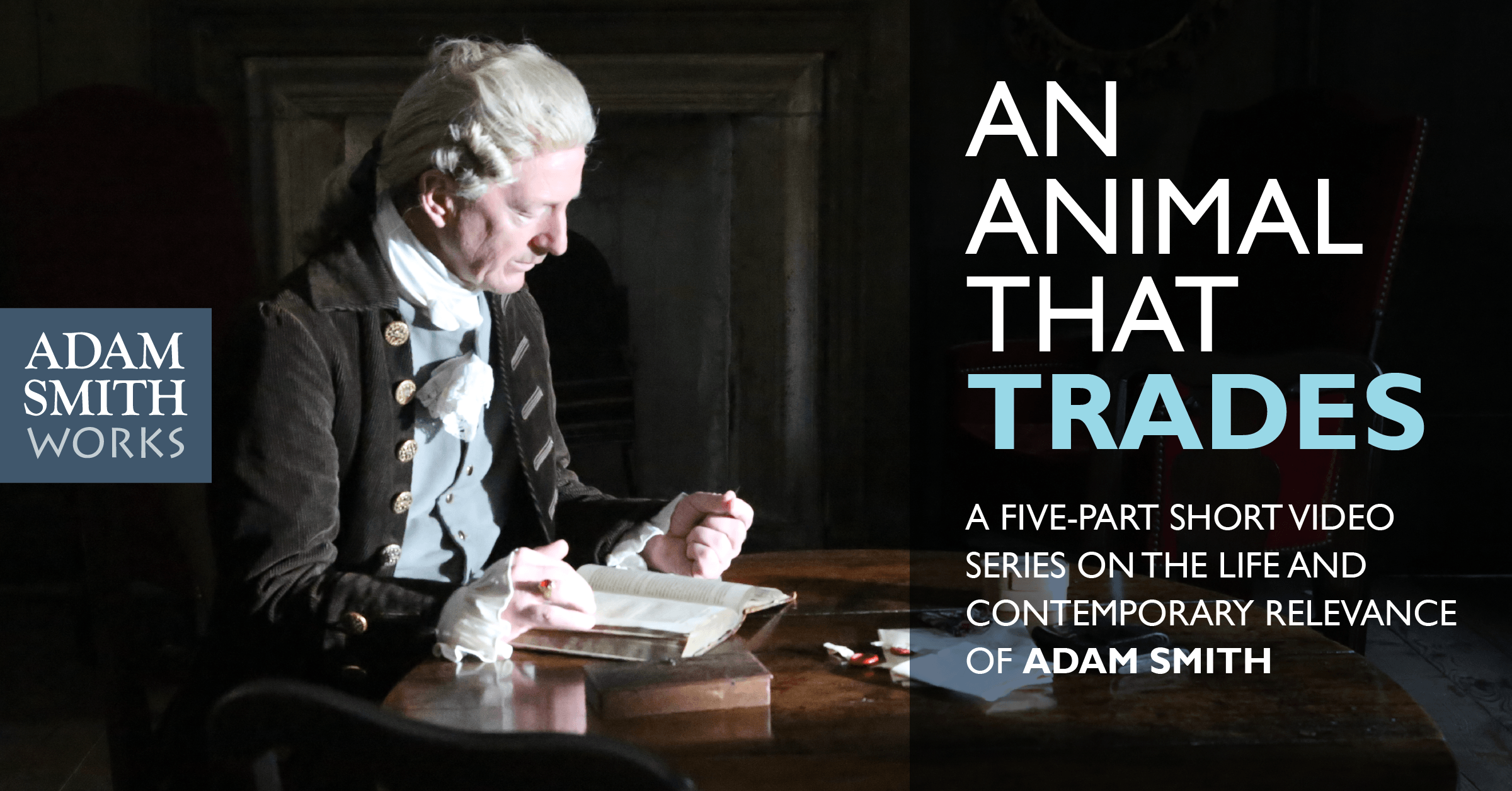
If you haven’t visited our newest sister site, AdamSmithWorks, we think you’re in for a treat. There’s new content going up there every week, as well as on their YouTube channel.
Today we added a video series, An Animal That Trades, to our own Econlib Videos collection.
As with all our videos, you’ll find complementary questions for further thought and discussion. One of the things I really like about An Animal That Trades is that it’s available in five, thematic, classroom-friendly “chunks,” each about 6-7 minutes. If you use any of these pieces in your own teaching, we’d sure love to hear about it.
Here’s a sampling of some of the questions prompted by the videos:
The narrator claims that economists today are more often seen as “fortune tellers” or “stockbrokers.” How did Adam Smith see himself by contrast? Do you think this characterization of economists today is correct? Why or why not?
The narrator describes the “spontaneous pattern” of the invisible hand as amoral. To what extent do you really believe such an outcome is amoral, even if spontaneous?
What were the main tenets of the physiocrats, who the Smith spent time with during his tenure in France? What did laissez-faire mean to them? What does it mean today?
The film takes us to life in a garment factory in modern-day Ethiopia, and the narrator points out that the workers’ “lives have changed drastically over the past decade.” To what extent are these changes net positive? Explain.
What does Smith mean when he says, “The market alone may not ensure positive outcomes for all?” What else should the government do to ensure that the its citizens’ quality of life rises?
What is the “cobra effect?” Economists often refer to this effect simply as unintended consequences. What other examples can you think of that illustrate this effect? How might these effects be mitigated?


READER COMMENTS
Nick Ronalds
Nov 23 2019 at 5:55pm
Just starting to go through the site and it looks great. Thanks!
Amy Willis
Nov 24 2019 at 2:58pm
Thank YOU, Nick!
Comments are closed.